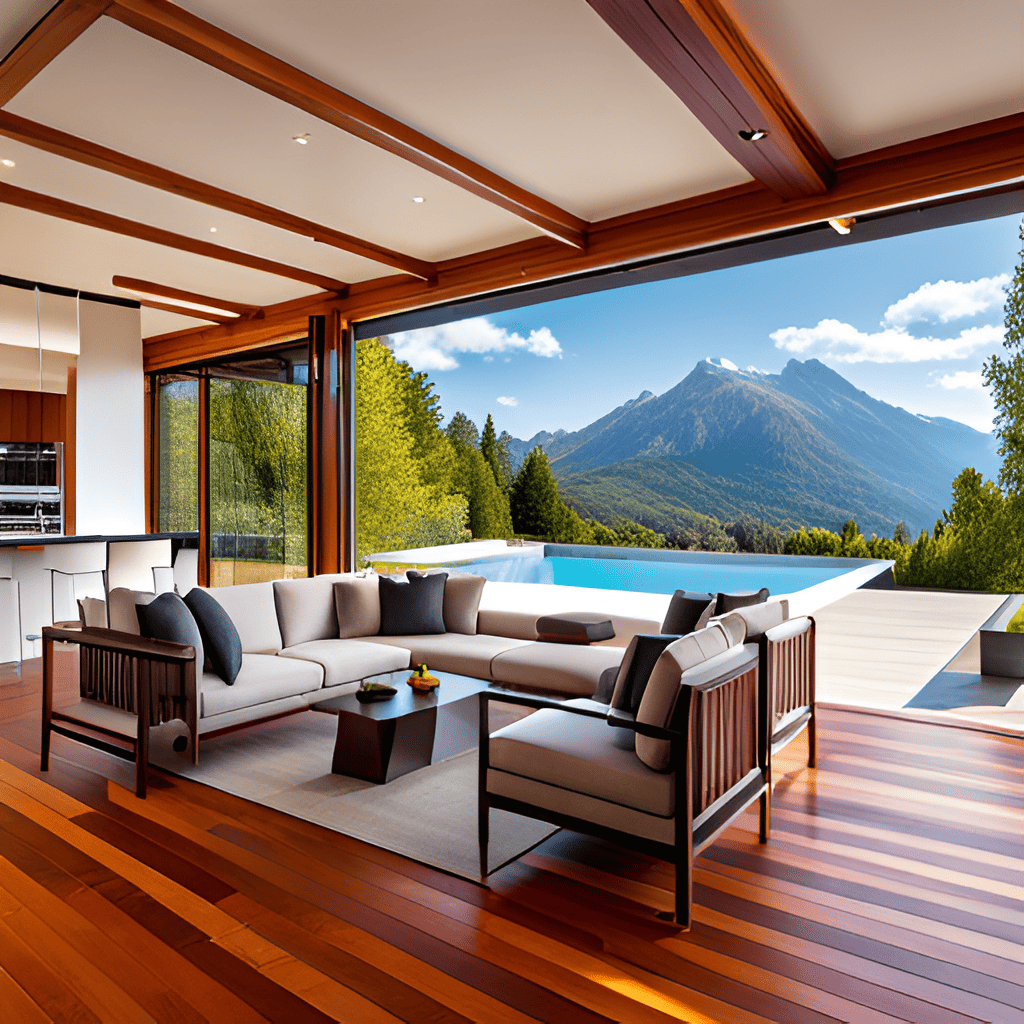Red Balau, also known as Bangkirai, is a hardwood species native to Southeast Asia. It is highly valued for its exceptional durability and resistance to decay, making it well-suited for various outdoor applications.
Its rich reddish-brown color and attractive grain pattern also add to its appeal, making it a sought-after material for decking, siding, furniture, pergolas, and other structures that require longevity and natural beauty in various outdoor settings.
Red Balau Is A Versatile Wood For Indoor And Outdoor Use
Here are some common uses for Red Balau wood:
- Decking: Red Balau is a popular choice for outdoor decking due to its natural resistance to rot, insects, and decay. Its attractive reddish-brown color and fine grain make it an appealing option for creating durable and beautiful decks.
- Siding and Cladding: The durability and weather-resistant properties of Red Balau make it suitable for exterior siding and cladding on buildings. It can provide protection and a pleasing aesthetic to the exterior of structures.
- Furniture: Red Balau is used to create high-quality outdoor furniture, such as benches, tables, chairs, and loungers. Its sturdiness and resistance to weathering ensure longevity in outdoor settings.
- Fencing: Red Balau’s durability makes it a practical choice for constructing fences that can withstand outdoor elements, including rain, sun, and humidity.
- Pergolas and Gazebos: Red Balau wood is utilized in the construction of pergolas and gazebos, providing a sturdy and attractive framework for outdoor shade structures.
- Boardwalks and Bridges: The natural strength and resistance to moisture and decay make Red Balau an excellent option for constructing boardwalks, bridges, and other outdoor structures in wet or humid environments.
- Marine Applications: Red Balau’s resistance to water and marine borers makes it a suitable material for some marine applications, such as boat docks and decks.
- Railings and Balusters: Red Balau’s stability and natural beauty make it an excellent choice for railings and balusters, enhancing the appearance and safety of outdoor staircases and decks.
Red Balau’s versatility, durability, and appealing appearance make it a favored choice for a wide range of outdoor construction and woodworking projects. Its ability to withstand exposure to the elements, including rain, sun, and insects, ensures that structures and furniture made from Red Balau wood can last for many years with minimal maintenance.

Red Balau Characteristics And Fact Sheet
Here’s a table with 15 characteristics of Red Balau wood and the tree:
| Aspect | Description |
|---|---|
| Tree Name | Red Balau (Shorea spp.) |
| Other Names | Bangkirai, Selangan Batu, Yalap, Balau |
| Tree Height | Up to 40-50 meters (131-164 feet) |
| Trunk Diameter | Approximately 1-1.5 meters (3.3-4.9 feet) |
| Growth Environment | Native to Southeast Asia, including Indonesia and Malaysia |
| Wood Color | Rich reddish-brown with hints of yellow and dark streaks |
| Wood Grain | Interlocked grain pattern |
| Density | Moderately dense hardwood with a density around 800-1,100 kg/m³ (50-68 lbs/ft³) |
| Durability | Highly durable and resistant to decay, termites, and rot |
| Stability | Relatively stable with minimal shrinkage and warping |
| Workability | Machining and shaping can be challenging due to hardness |
| Finish | Takes finishes well and develops a rich patina over time |
| Outdoor Use | Highly suitable for outdoor applications |
| Sustainability | Sourced from well-managed forests with responsible harvesting practices |
| Common Uses | Decking, siding, outdoor furniture, fences, pergolas, bridges, boardwalks, and more |
Red Balau Substitutes That Are Comparable Woods
There are several substitutes available for Red Balau wood, each offering similar properties and characteristics for various commercial applications:
- Ipe (Tabebuia spp.): Ipe is a dense and durable hardwood, like Red Balau, with a beautiful reddish-brown color. It is commonly used for decking, siding, and outdoor furniture.
- Cumaru (Brazilian Teak): Cumaru is another dense and durable hardwood with a reddish-brown to golden-brown color, suitable for decking and outdoor structures.
- Garapa (Brazilian Ash): Garapa is a durable hardwood with a light to golden-brown color, making it a good substitute for decking and cladding.
- Teak (Tectona grandis): Teak is a highly durable hardwood with a golden-brown color, often used for outdoor furniture and decking.
- Bangkirai (Yellow Balau): Bangkirai is a durable hardwood with a reddish-brown to yellow-brown color, similar to Red Balau, and commonly used for decking.
- Greenheart (Ocotea rodiaei): Greenheart is a dense and durable wood with a greenish-brown color, suitable for marine applications and outdoor construction.
- Redwood (Sequoia sempervirens): Redwood is a softwood known for its natural decay resistance and can be used for outdoor decking and siding.
- Cedar (Cedrus spp.): Cedar is a softwood with natural resistance to decay and insects, commonly used for outdoor furniture and decking.
When choosing a substitute for Red Balau wood, consider the specific project requirements, budget, and desired appearance. Each wood species has its unique characteristics, so consulting with wood experts or suppliers can help you select the best substitute that meets your needs and specifications.
Final Thoughts
Red Balau wood, derived from several species within the Shorea genus, is native to Southeast Asia, including Indonesia and Malaysia. The tree can grow up to 40-50 meters (131-164 feet) tall, with a trunk diameter of approximately 1-1.5 meters (3.3-4.9 feet). The wood itself is characterized by its rich reddish-brown color, interlocked grain pattern, and moderate density, providing excellent durability and resistance to decay, termites, and rot.
Red Balau is highly sought after for outdoor applications like decking, siding, outdoor furniture, fences, pergolas, bridges, and boardwalks due to its stability and ability to withstand the elements.
Moreover, Red Balau wood is sourced from well-managed forests with responsible harvesting practices, making it a sustainable choice for woodworking projects.

